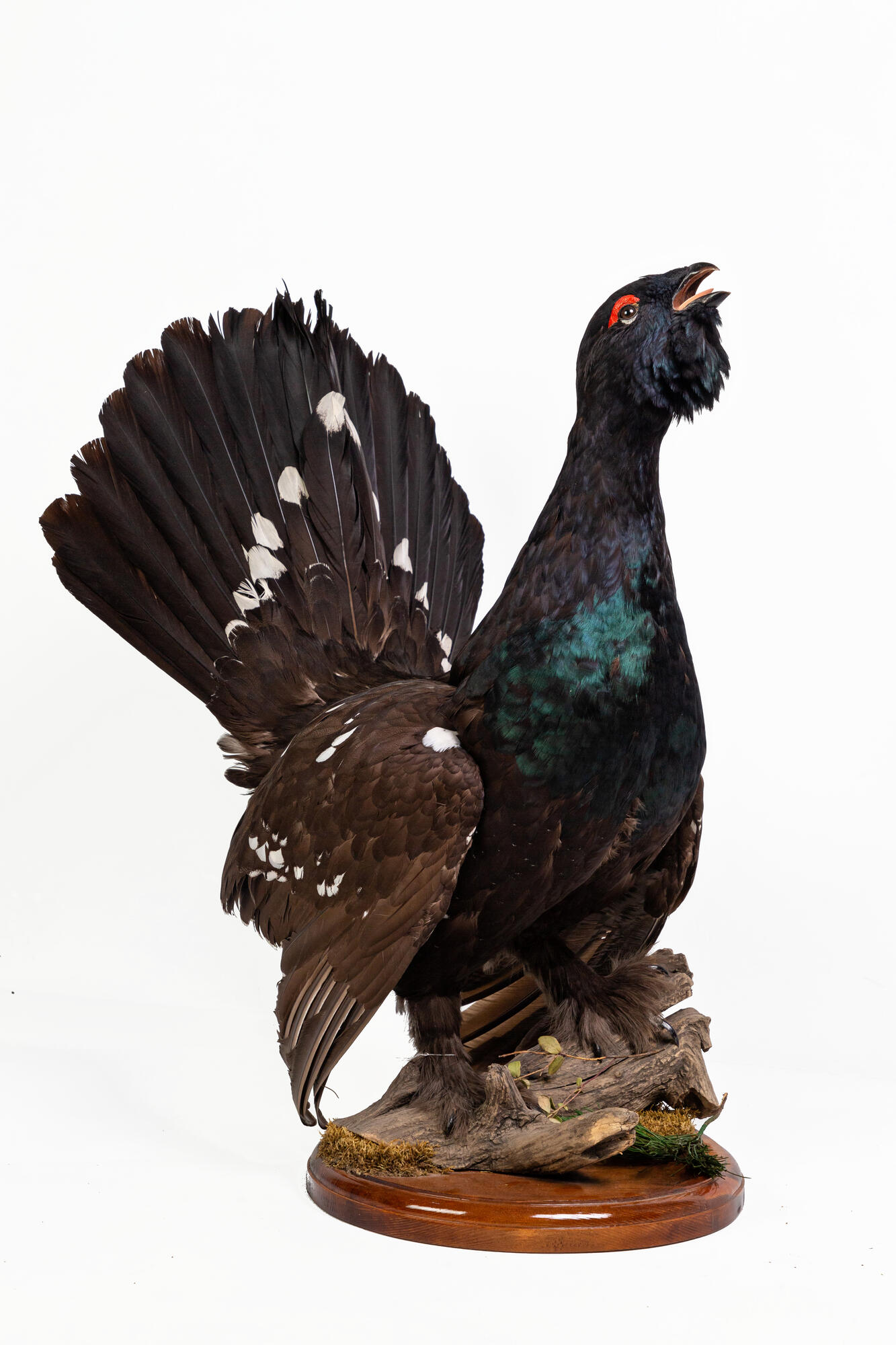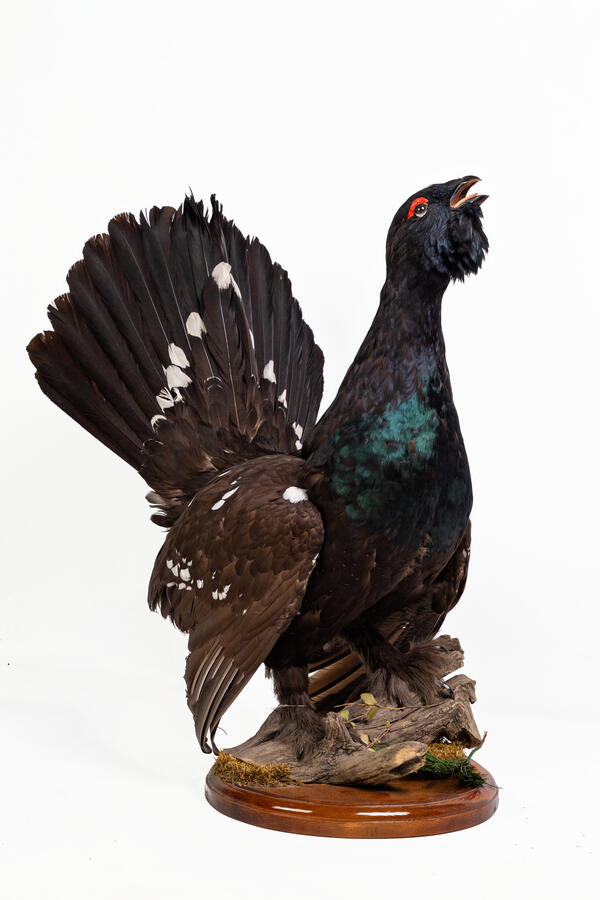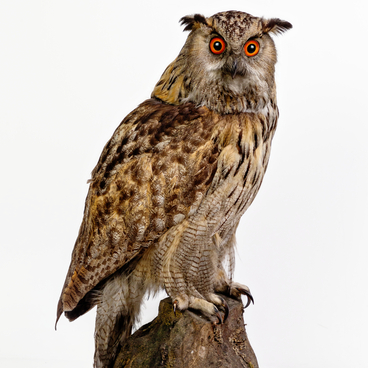The rock capercaillie differs from the common capercaillie in its smaller size, longer tail, and plumage color. It is colored in darker, bluish-black tones. In addition, the male rock capercaillie has characteristic rounded white spots on the tail, and during the mating call, the male shows a rounded beard, so that its head seems round. The beak, unlike the common capercaillie, is dark.
The rock capercaillie is a typical forest dweller and leads a rather secretive lifestyle. It inhabits mainly larch taiga, but does not avoid areas with cedar, pine, and hardwoods, thus preferring sparse forests alternating with clearings and river valleys.
These birds spend most of their time on the ground. They lead a sedentary lifestyle, but if necessary, they can travel long distances and make flights from one ridge to another at an altitude of up to 1,000 meters.
Spring mating occurs at the end of April or in early May. Birds mate on the ground and start singing before dawn. They do not form pairs. Their nests are placed on the ground, usually near a tree trunk or under a fallen trunk, in a pile of brushwood, but sometimes quite open.
Birds spend the winter in flocks, with males separated from females. At this time, capercaillies feed on the shoots and buds of larch and various shrubs, cedar needles, pine, and fir. They spend the night in snow-covered chambers in glades, clearings, or channels.
The birds leave the snow-covered chambers in the morning and immediately begin feeding flying up trees or walking in the snow. At low temperatures, biting larch shoots, which become brittle in the cold, is not difficult for the bird. In the middle of the day, birds rest, thus burrowing in the snow, or sitting on the crowns of trees.
Often, if weather conditions allow, capercaillies walk for a long time in the snow during the day in search of the forage more attractive than larch shoots, such as rosehip berries, birch buds and catkins, or blueberries. They do not fly much in winter. They only fly up to forage trees and fly from feeding places to the places where they spend the night and back. In severe frosts, birds at all costs tend to burrow in the snow, but if it is impossible to do this (little snow or hard crust), they spend the night either in trees being huddled in the thick of branches or on snow in surface holes. From the moment of thawing until the next winter, they feed mainly on the ground. Their main food is seeds, flowers and green parts of herbaceous plants, various berries, and insects.
The rock capercaillie is a typical forest dweller and leads a rather secretive lifestyle. It inhabits mainly larch taiga, but does not avoid areas with cedar, pine, and hardwoods, thus preferring sparse forests alternating with clearings and river valleys.
These birds spend most of their time on the ground. They lead a sedentary lifestyle, but if necessary, they can travel long distances and make flights from one ridge to another at an altitude of up to 1,000 meters.
Spring mating occurs at the end of April or in early May. Birds mate on the ground and start singing before dawn. They do not form pairs. Their nests are placed on the ground, usually near a tree trunk or under a fallen trunk, in a pile of brushwood, but sometimes quite open.
Birds spend the winter in flocks, with males separated from females. At this time, capercaillies feed on the shoots and buds of larch and various shrubs, cedar needles, pine, and fir. They spend the night in snow-covered chambers in glades, clearings, or channels.
The birds leave the snow-covered chambers in the morning and immediately begin feeding flying up trees or walking in the snow. At low temperatures, biting larch shoots, which become brittle in the cold, is not difficult for the bird. In the middle of the day, birds rest, thus burrowing in the snow, or sitting on the crowns of trees.
Often, if weather conditions allow, capercaillies walk for a long time in the snow during the day in search of the forage more attractive than larch shoots, such as rosehip berries, birch buds and catkins, or blueberries. They do not fly much in winter. They only fly up to forage trees and fly from feeding places to the places where they spend the night and back. In severe frosts, birds at all costs tend to burrow in the snow, but if it is impossible to do this (little snow or hard crust), they spend the night either in trees being huddled in the thick of branches or on snow in surface holes. From the moment of thawing until the next winter, they feed mainly on the ground. Their main food is seeds, flowers and green parts of herbaceous plants, various berries, and insects.



